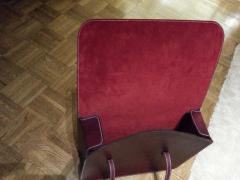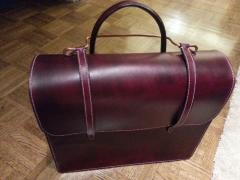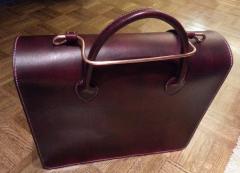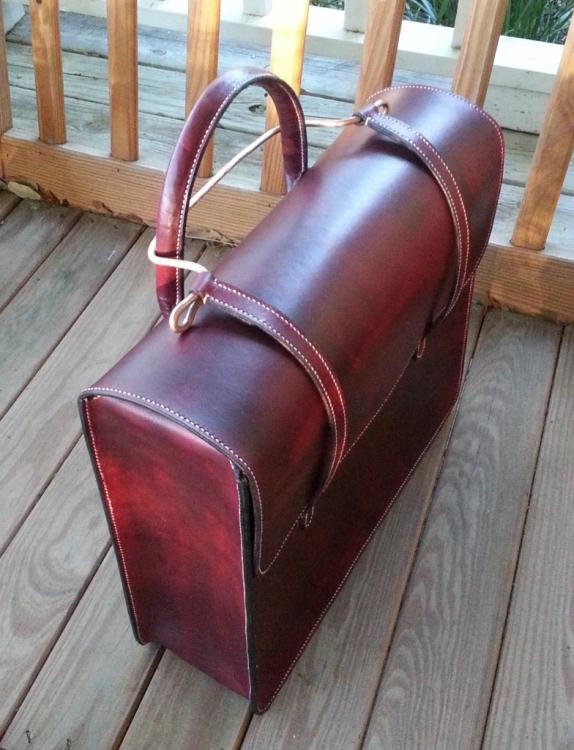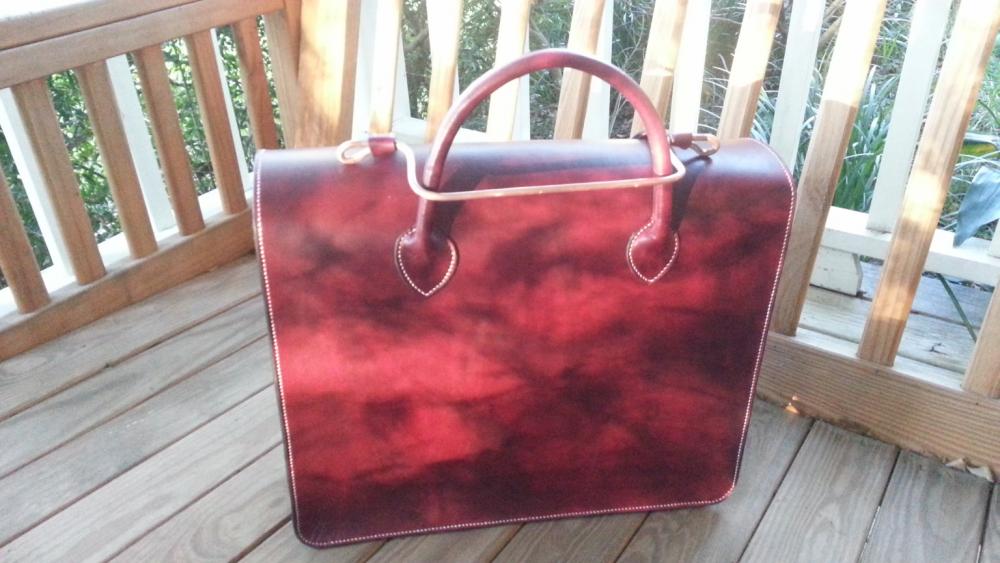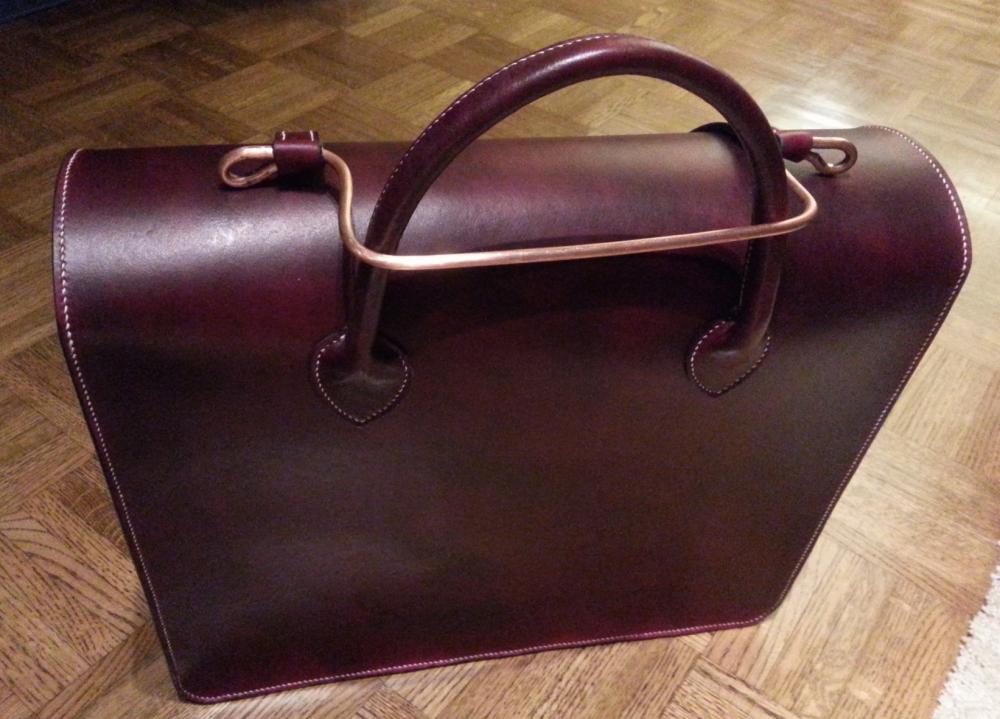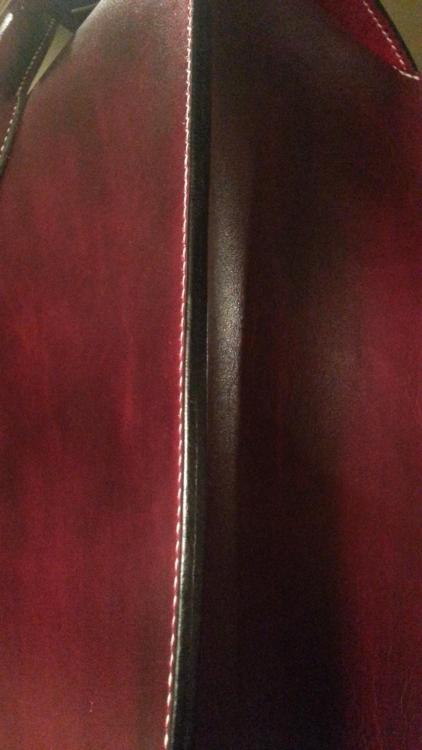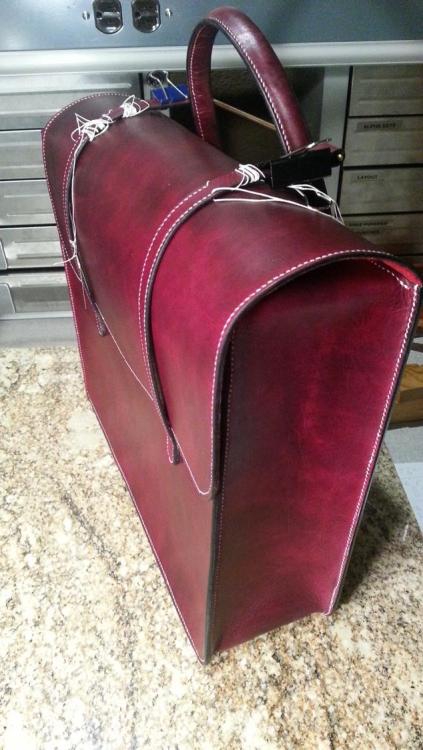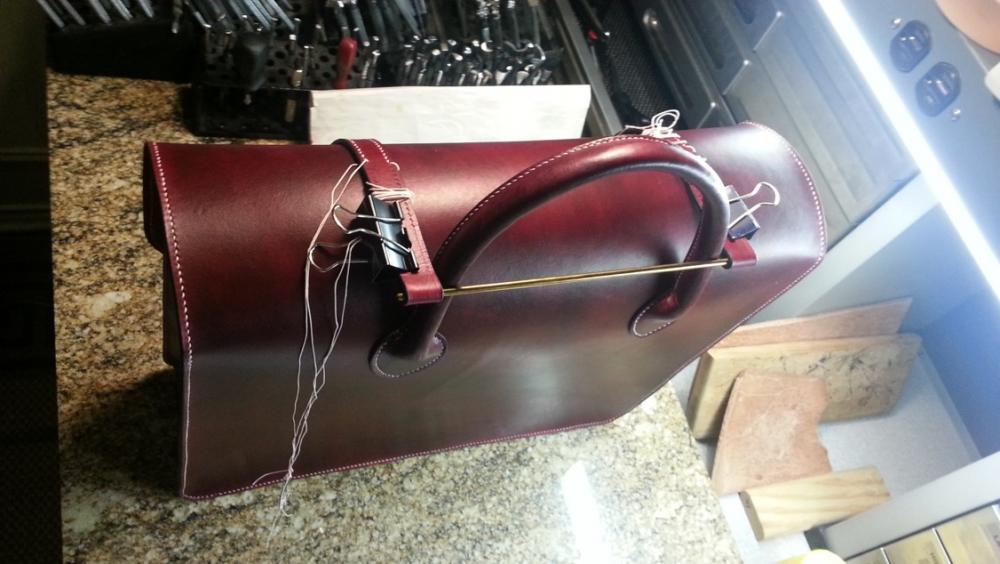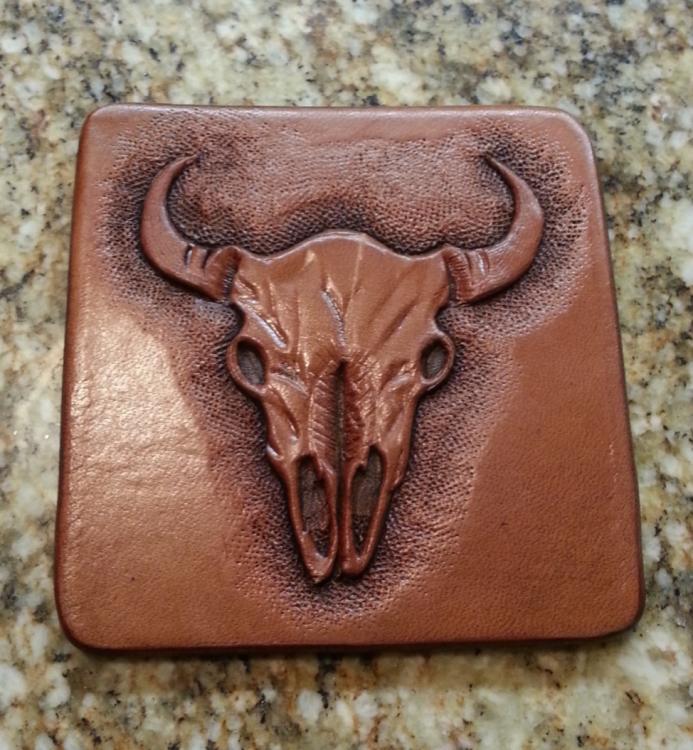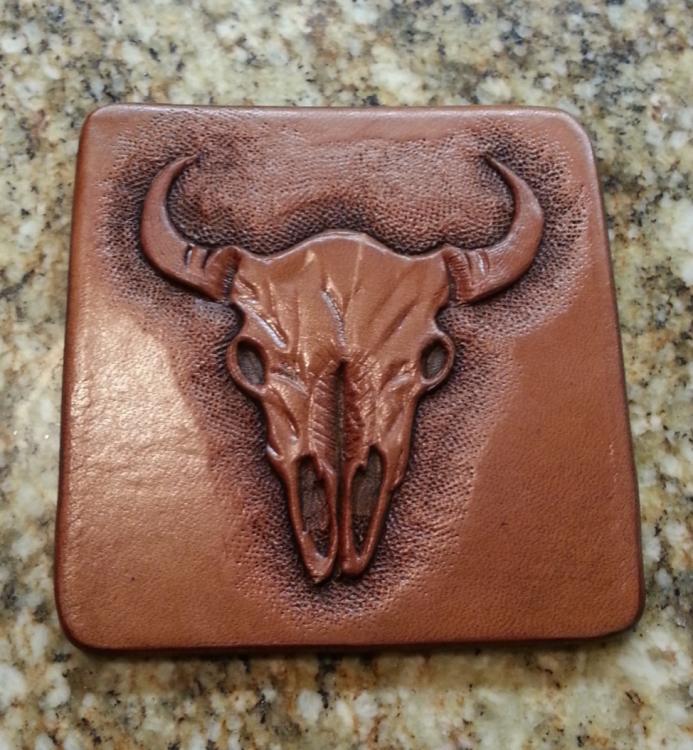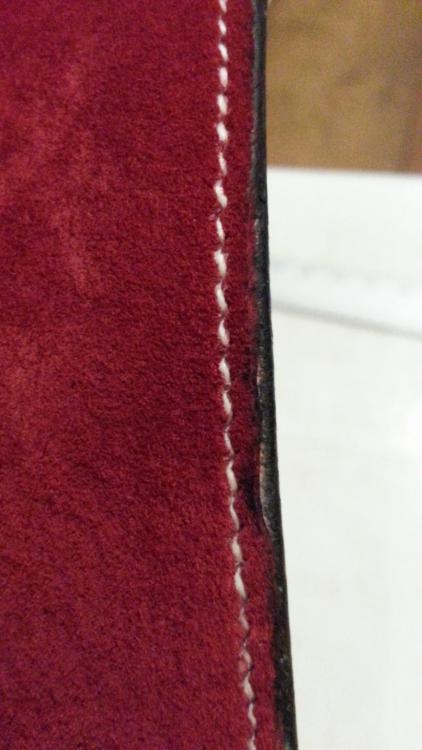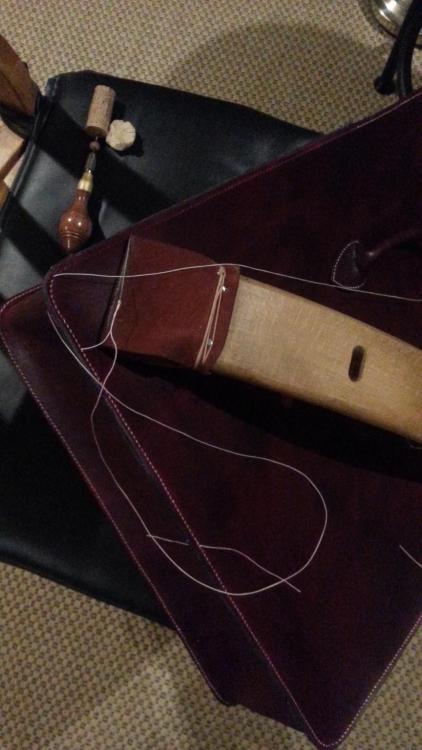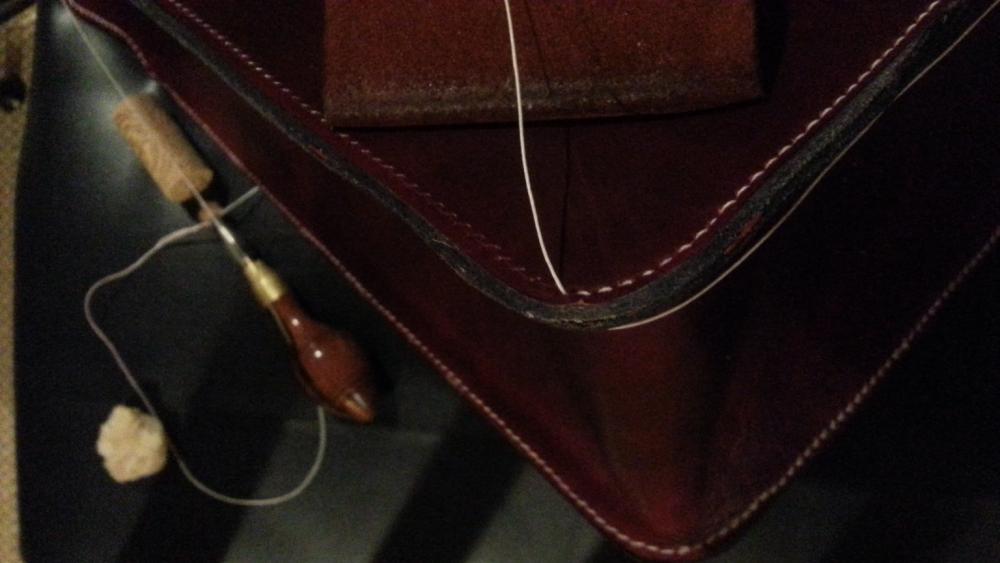-
Posts
3,786 -
Joined
-
Last visited
Content Type
Profiles
Forums
Events
Blogs
Gallery
Everything posted by YinTx
-
-
From the album: Briefcases
Finally finished my version of a music case. This one is significantly larger than what I have seen, designed to fit a 15" MacBook Pro, and other necessities. Hand stitched using Coats Barbour, fully lined, hand dyed veg tan body.© YinTx
-
From the album: Briefcases
Finally finished my version of a music case. This one is significantly larger than what I have seen, designed to fit a 15" MacBook Pro, and other necessities. Hand stitched using Coats Barbour, fully lined, hand dyed veg tan body.© YinTx
-
From the album: Briefcases
Finally finished my version of a music case. This one is significantly larger than what I have seen, designed to fit a 15" MacBook Pro, and other necessities. Hand stitched using Coats Barbour, fully lined, hand dyed veg tan body.© YinTx
-
From the album: Briefcases
Finally finished my version of a music case. This one is significantly larger than what I have seen, designed to fit a 15" MacBook Pro, and other necessities. Hand stitched using Coats Barbour, fully lined, hand dyed veg tan body.© YinTx
-
It is way too tight, this design it doesn't matter if there is anything inside or not, the lid fits down to the strap connection, and the bar is supposed to go across the back of the handle. But I have finished it anyhow, taking some liberties along the way to make it work. Here is the finished product. Sorry about the photo quality, whatever blood I had left from the stickin the mosquitoes were keen to acquire for their own, so I had a bit of a time holding still what with all their pushin and shovin to get at me. Thankfully none of the resulting splatter and gore got on the project. I tried to take one image inside as well, but this color just doesn't photograph as well as it looks in person. YinTx
-
Thanks, RockyAussie! and here I was thinking the 4 star was from my overactive typing personality! It has been delivered to the intended recipient, and is duly serving it's purpose now. I am curious to see how long it holds up... Thanks, Bodean! I think it was a stroke of luck, and not what I had in my mind when I started it, so we'll see how well I fare when I attempt another in the near future.... YinTx
-
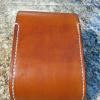
Getting started: first handbag
YinTx replied to motocouture's topic in Purses, Wallets, Belts and Miscellaneous Pocket Items
Looking nice so far! And shouldn't be too hard to stay below my current thumb puncture record YinTx -

First card wallets
YinTx replied to Prusty's topic in Purses, Wallets, Belts and Miscellaneous Pocket Items
They look pretty good to me. I'd be tempted to try to start/stop the stitching at places that need a reinforcement, like a pocket top, instead of a corner that attracts the eye, but that is perhaps a personal preference. What did you use for a liner? YinTx -
Aren't the Artisan and Singers lockstitch machines, not saddle stitch machines? I don't think I've ever even heard of a saddle stitching machine.... saddle stitching kinda implies an awl and two needles and both hands with a single length of thread. Look forward to seeing more of your work on leatherworker, definitely nice stuff! YinTx
-
Impressive. And last I heard, genuine Panama hats are getting harder to come by as there are fewer and fewer makers. Also, this is driving up the $$, so that was a pretty expensive sacrifice for an experiment, but dang, well done! I like the idea of using different mediums as inlays.... going to keep that one in the back of my mind for future reference! YinTx
-
I really like your stuff. But I have a quick question: what machine are you using to do this? (quote from your Etsy page): "The holster is then put together with heavy bonded polyester cord in a saddle stitch with a commercial stitching machine. " YinTx
-
haha, ya I just give it a shake when I need to dye some leather red. latest greatest.. checking fit up.. not so great...will endeavor to do some artistic license to get better results... YinTx Tryin to get that edge to shine... time for some of that wine.
-
Was healing up just fine, and managed to send a needle into the same thumb yesterday. Interestingly, I don't tend to poke myself while actually putting the awl or a needle through the holes while stitching, but when something gets wonky and I am trying to untangle a thread or thread gets wrapped around something and snagged, that's when those lil buggers tend to inflict hatred into my digits. I use the cork method when I know I have a difficult hole to make, has worked well for me. Grey Drakkon, Thanks for that. I'm a bit concerned about the bar straps right now, they may be a wee bit too short. Time will tell when I get the bar installed. Might have to use some artistic license to accommodate it. Edges are all done, that bar is the last remaining bit... YinTx
-
So I've never done a figure carving before, beyond trying my hand at Sheridan Carving, and I've been trying to work out antiquing/resisting etc. So I knocked this out to have something to try a different approach at antiquing. Figure it's just about the right size for someone to set their cold can of favorite beverage on. Just thought I'd show it here for comments. YinTx
-

Saddle Lac Sadness
YinTx replied to YinTx's topic in Dyes, Antiques, Stains, Glues, Waxes, Finishes and Conditioners.
JD62, I have seen several of his videos, and this one in particular I have watched like 4 times since I have been so frustrated with the Tan-Kote. He is one of the proponents of putting on copious amounts of Tan Kote prior to antiquing. I am suspecting other's perception and my perception of copious are two different things, which is why I experimented with -thin- coats. The outcome was closer to what I had envisioned. NVLeatherWorx, I have an "experiment" in mind that is quite similar to what you are proposing. The only things I have used as a "resist" have been Tan-Kote, Clear Lac, Saddle-Lac, Resolene, and Angelus Acrylic finisher. Per my studies of Al Stohman's books, internet musings, videos, etc, I had been expecting varying degrees of resist from each, and to use each with different antique products (such as Angelus Acrylic antique with the acrylic resists/finishes, and Fiebings paste antique with the Tan-Kotes, Clear-Lacs, etc). So I intend to lay them out side by side, and see what looks I can accomplish with different combinations, etc. I hammered out some basket weave on some scrap belly with some texturing, etc today as a test bed. We'll see how it goes! And thanks much for the compliment, I was pleasantly surprised at how it came out, considering my complete lack of artistic capabilities in other mediums. That is probably destined to sit under a cold beer in my brother's garage, at 3"x3" prolly 'bout the right size for the job. YinTx -

Saddle Lac Sadness
YinTx replied to YinTx's topic in Dyes, Antiques, Stains, Glues, Waxes, Finishes and Conditioners.
First experiment seems a bit successful... not quite where I want it, but infinitely better than what I was getting. The antique seemed to stay in the textured sections with differing degrees of tenacity. I tooled this cow skull just to see if I could, first thing I have done of this type, so don't be too harsh on the artistic quality. Here is the process I used: OTATC : Oiled with neatsfoot, treated with two layers of Tan-Kote, Antiqued with Medium Brown Fiebeng's paste, treated with Tan-Kote, then treated with Clear Lac. Here is where I did things differently: very thin layers of Tan-Kote, to where there was no shine, it almost all absorbed into the leather. In the past, I had been putting a heavy coat per all instructions, that set on top of the leather, which later peeled off. The final coat of Clear Lac was 50% thinned. I'll be doing some other trials, with different resists done different ways to see what I like best, but I am relieved to have achieved this result finally. YinTx -
It seems I've either missed it, or no one has asked... what do you plan to sew mostly? I have both machines, and a lot of stuff the 4500 simply won't do for me because of the thickness, such as one layer of <4 oz leather to canvas. I suppose if you were an expert and could finagle the machine, it might do it. Otherwise, the smaller machine is the tool for the job. I even have difficulties getting the tensions right on that one with this combination. However, once you have to double up and have 2 layers of leather and 2+ layers of heavy canvas, sometimes the little machine won't step over the hump so to speak. All this being said, I am far from an expert, only having struggled to sew a few things on the machines I have. Just thought someone should pose the question "what is the intended use of the machine?" YinTx
-
As promised, a pic of the not so great edge, caused by trying to trim the suede only due to putting the liner in after the leather has been cut to size. Here is the last edge, dyed and ready for burnishing: Getting closer to finishing! YinTx
-

MERNICKLE "WILD BUNCH" 1911 HOLSTER
YinTx replied to AA3JW's topic in Gun Holsters, Rifle Slings and Knife Sheathes
I've fought hard to resist the holster temptation... but I will give in eventually. Already have some blue molds... thankfully none for an old Blackhawk...or I'd have already given in! I have in my mind a holster I want for it.. but haven't seen one so I am not sure how to go about it... when I give in to the temptation, it will be fun. YinTx -
I'll take a photo of a not so good edge. And I remembered that key rule, which I learned in the beginning when I was reading about stitching... at the time, I was thinking, "What are they talking about?" I soon found out. The thumb seems a bit better, so I made a little progress today, now taking a break to let the forearms recover on ice. YinTx
-
Looks like an ambitious project, look forward to seeing it progress. If you are seriously considering hand stitching, be ready for many many hours, as that thing looks like it has about a mile of stitching in it! Think I'd be tempted to get the machine to cooperate for a project like that. I think 4/5 oz leather would make for a heavy bag, just an opinion. Folks seem to think that a heavy leather equates to quality, so maybe go for the 4/5? Perhaps the body in 4/5 and pockets in 2/3 to reduce the weight.. YinTx
-

Arizona Belt
YinTx replied to GrayHallidayJr's topic in Purses, Wallets, Belts and Miscellaneous Pocket Items
I think, as an artist, doing it right means doing it your way, which means making new rules, and new unique art. So I'd say you are doing it right. And very well. YinTx -
You know, when you are bleeding, $*&t just got REAL. YinTx




